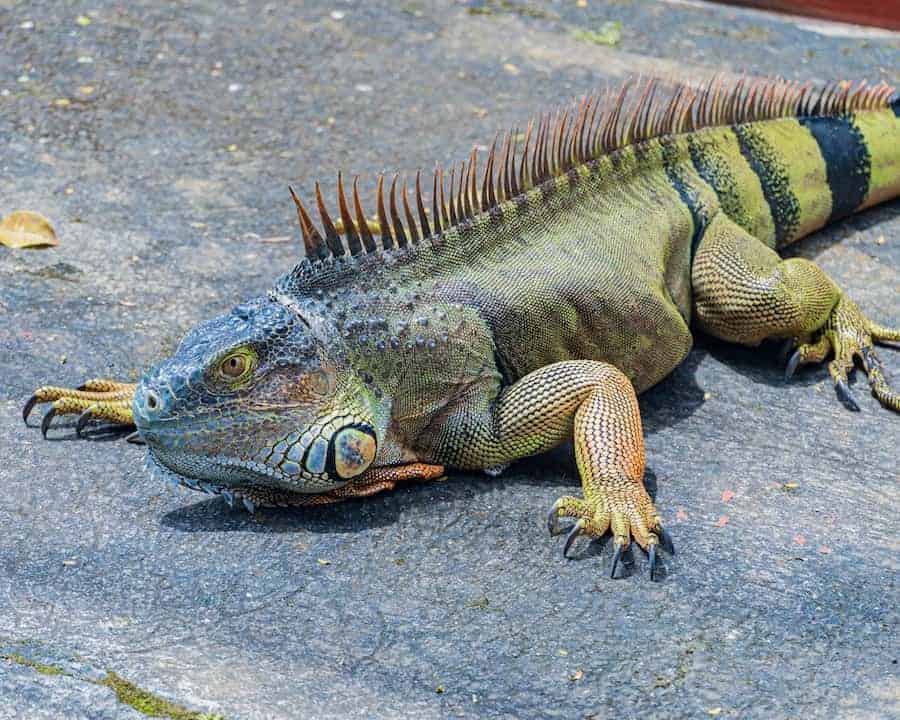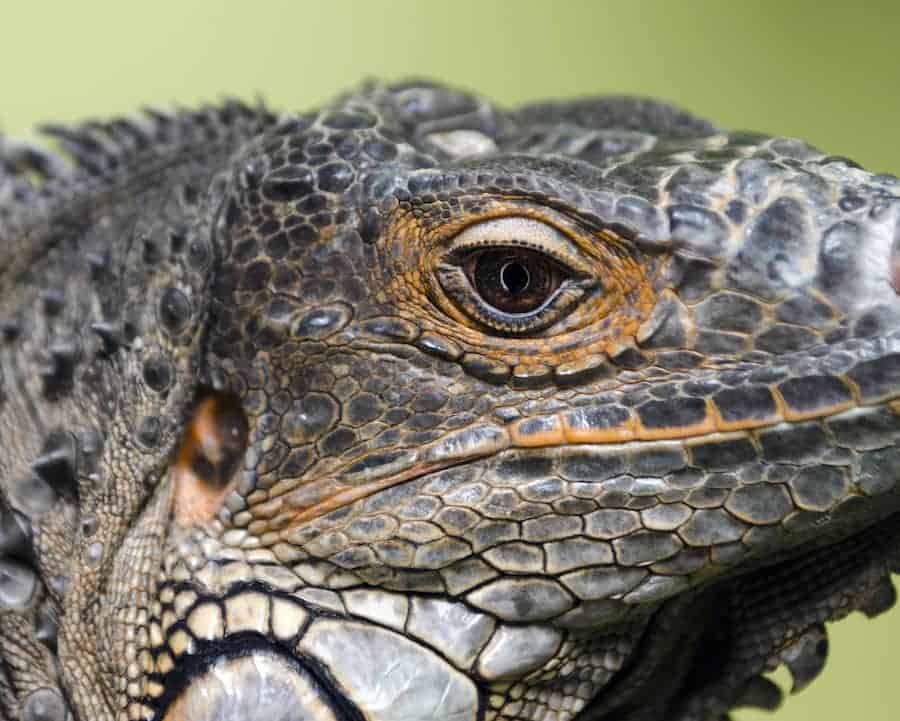While most reptiles are known for having two eyes, the iguana is a rare exception. Very few people are aware of the almost invisible yet extremely useful third eye.
In total, iguanas have three eyes. The third is called the parietal eye, which is responsible for detecting changes in light, regulating bodily functions, and navigation. The eye, which looks like a small and pale scale, is located at the top center of an iguana’s head and is not as delicate as their regular two eyes.
In this article, you’ll learn in detail about the parietal eye, why iguanas have this special feature, and whether the eye requires special care.
Do Iguanas Have a Third Eye?

Yes! When quickly glancing at an iguana, the parietal eye may not be very noticeable, as it blends in with the rest of their body. However, Iguanas do have a third eye.
The eye is located at the top of the iguana’s head, centered between the two eyes, and looks like a small notch.
It’s much smaller than the iguanas’ other two eyes, but larger than scales.
Scientists believe the parietal eye developed from the pineal organ. Hence, it’s been found in many species of extinct lizards.
Additionally, certain reptile fossils contain skull sockets which experts believe are responsible for housing the third eye.
How to Locate the Eye:
- Position your iguana’s head towards you.
- From above, examine the iguana’s head.
- Look for a small notch at the top center portion of its head.
- You’ve found it!
The third eye produces amazing and unique capabilities which help iguanas not only survive but also thrive in their natural habitat.
Why Do Iguanas Have a Third Eye?

The parietal eye is responsible for the following functions.
Regulation
Like humans, iguanas require circadian rhythm regulation, a system which uses natural light to regulate our sleep cycles. However, while we use our eyes, iguanas utilize the third eye.
The parietal eye is also responsible for hormone and thermoregulation, which occur when the eye reacts to external environments and triggers the proper bodily response.
In summary, the parietal eye regulates:
- Sleep
- Hormones
- Body Temperature
Detection
One of the parietal eyes’ most fascinating functions involves the detection of light and changes in color, an exceptionally useful survival mechanism for detecting flying predators.
Iguanas are herbivores which primarily feast on leaves and the occasional fruit. Unfortunately, they lose some level of awareness as they’re eating, leaving them more susceptible to being preyed upon by other animals.
The third eye allow iguanas to maintain a sense of awareness when engaged in activities where they cannot depend on their ordinary vision. Whenever another animal is nearby, the subtle changes in light and color notify the iguana of its presence.
This is especially helpful for protection against overhead predatory birds that may swoop down and try to make a meal out of the iguana, such as Harris’s Hawk, showed in the previous image.
Hence, iguanas like to hang out on branches above bodies of water to be able to dive in an event of a threat from above.
For more info on iguana eyesight check out this post I wrote called, Are Iguanas Nocturnal? The Answer May Surprise You.
Navigation
The parietal eye has the ability to pick up on polarized light. Hence, scientists also believe it can act as a compass because it can sense certain changes in environments, such as light, color, and temperature.
If, for example, an iguana has wandered too far away from its preferred area, the parietal eye can help it navigate back home.
Is the Third Eye Delicate?

Unlike the two eyes on the side of an Iguana’s head, the parietal eye isn’t as delicate as it’s very small and protected by the scaly head of the Iguana.
These lizards also don’t have to worry about their vision becoming impaired if they get dirt or debris on the parietal eye, unlike their standard eyes.
While the parietal eye may not be the iguana’s most delicate feature, it still plays an important role in keeping the lizard regulated and protected and should be cared for accordingly.
Does The Third Eye Require Any Special Care?

Because the third eye is used to sense the natural rhythms of an Iguana’s life, it can be helpful for you to simulate certain aspects of their natural habitat in an enclosure.
Here’s how you can help care for your iguana’s third eye:
- Automatic Lighting – ensures your lizard receives a constant cycle of light, which helps keep their bodies regulated and their third eye functioning properly.
- Use One Source of Lighting – if you can, don’t switch between artificial and natural lightning. The differences in these light sources are interpreted differently by the iguana, which can cause them to become out of balance.
- Clean the Area – it may be helpful to periodically clean the parietal eye and its surrounding area. As the iguana sheds, dead skin cells can get in the way of this eye’s functions.
- Strengthen their Abilities – If you own an iguana that lives in an indoor enclosure, it may not need to use its parietal eye the same way it would in the wild. Therefore, you can simulate certain experiences. For example, you can hold your hand and slowly move it around the top of its head, thereby, maintaining its ability to sense changes in light.

